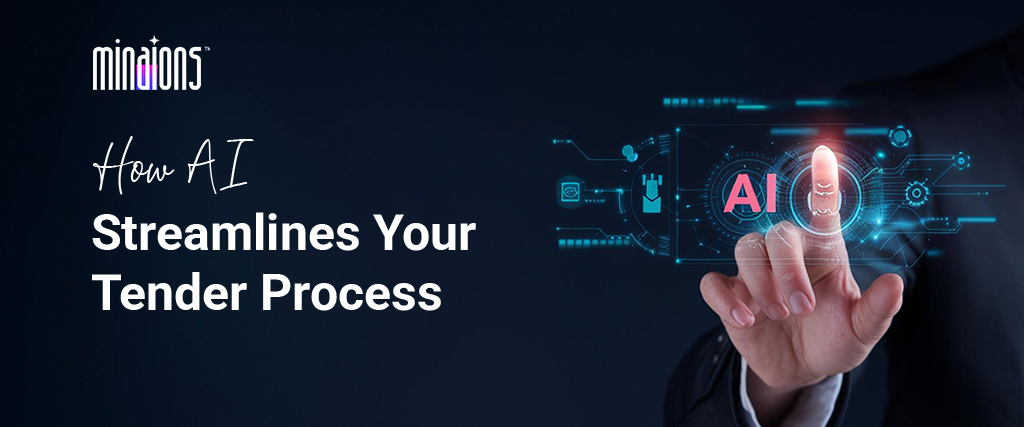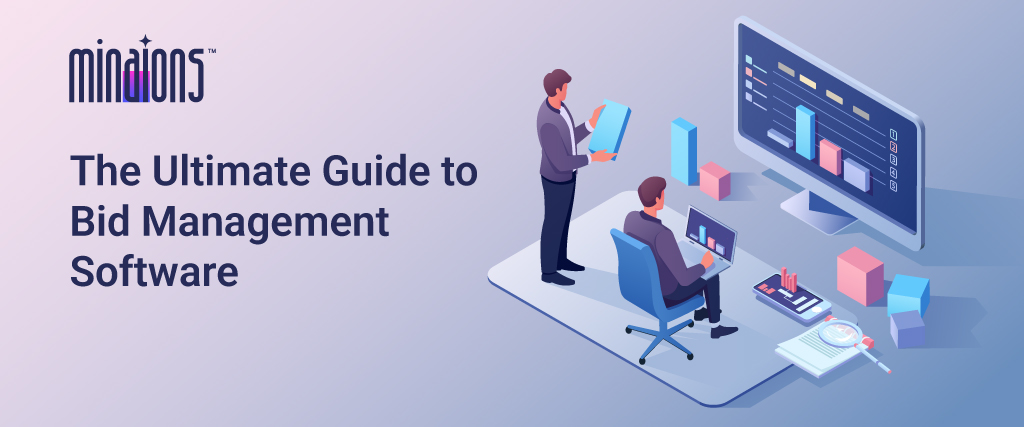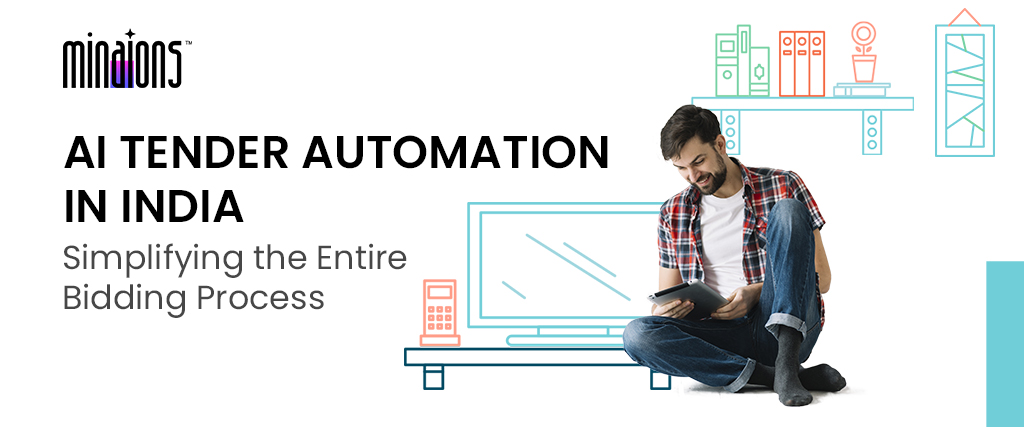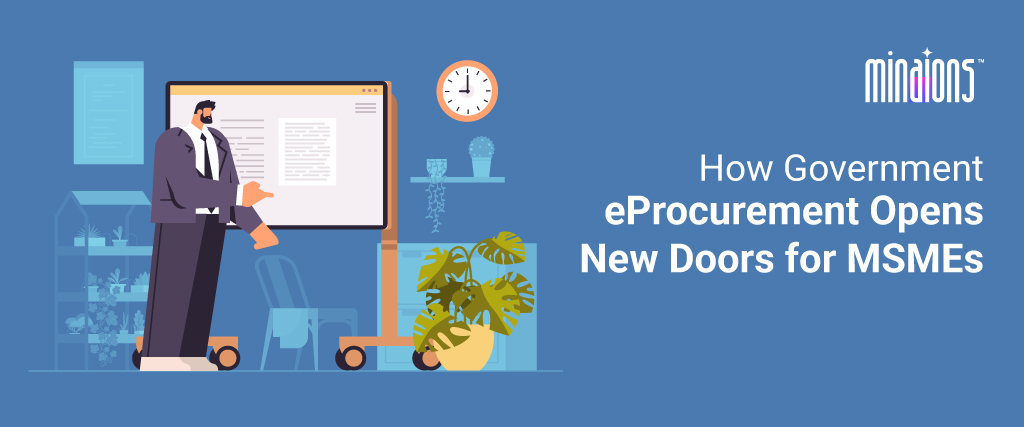How AI Streamlines Your Tender Process

Navigating government tenders can be an overwhelming task for most businesses. From finding the right opportunities to preparing accurate bids, the process is often slow, heavily manual, and full of uncertainty. With thousands of tenders being floated each day, staying updated and compliant becomes a daily challenge, especially for smaller companies with limited resources. This is where Artificial Intelligence (AI) steps in, not to replace human effort, but to reduce the burden and improve efficiency. In this blog, we’ll explore the key challenges businesses face in the tendering journey and how AI helps streamline each step.
The Top 6 Key Challenges in the Tendering Process
Limited Access for Smaller Companies
Due to the complexity and time required, smaller businesses often find themselves unable to compete. Lack of awareness, limited manpower, and difficulty in managing documentation prevent many from even applying for tenders they could potentially win.
Inefficiency Despite Scale
With over 23,000 tenders floated daily and government procurement contributing a significant share to the GDP, the scale of the system is enormous. Yet, the process remains disorganized, leading to duplicated efforts, delays, and lost opportunities across the board.
High Risk of Documentation Mistakes
Many companies lose out on tenders not because they lack capability, but due to small documentation errors, like missing certificates or incorrect file formats. These oversights, though simple, lead to immediate disqualification and wasted effort.Heavy Dependence on Manual Work
The entire lifecycle of government tendering, from finding tenders to evaluating them and preparing responses relies heavily on manual effort. Businesses must visit multiple portals, download large files, and sift through unstructured data. This process consumes significant time and increases the chances of human error.Lack of Clarity and Confidence in Decision-Making
Businesses often struggle to evaluate whether a tender is worth pursuing. Without clear insights into eligibility, competition, or evaluation criteria, teams operate with uncertainty. This leads to either missed opportunities or wasted effort on bids with low chances of success.Unstructured and Inconsistent Tender Formats
Tenders are rarely uniform. Some come in Hindi, others in Excel, and many are long PDFs spanning hundreds of pages. Critical details like eligibility or evaluation criteria are often buried deep inside, making it hard to extract relevant information quickly and accurately.How AI Helps Streamline the Tendering Process
Minimize Repetitive Manual Effort
AI helps reduce the burden of routine tasks like downloading tender files, extracting key sections, and organizing document content. This enables teams to focus more on decision-making and less on mechanical work.Smart Filtering for Relevant Tenders
Instead of scanning thousands of listings manually, AI allows businesses to filter tenders using parameters such as keywords, sectors, and locations, ensuring that only the most relevant opportunities reach them.
Better Visibility into Eligibility Criteria
AI systems can quickly scan tender documents and extract eligibility requirements. This gives businesses clarity upfront on whether they meet the conditions, helping avoid time spent on tenders they can’t qualify for.
Ensures Accurate and Compliant Documentation
Before a bid is submitted, AI checks for incomplete files, missing certificates, or formatting issues common mistakes that lead to disqualification. This improves submission quality and reduces rework.
Accelerates Bid Preparation Timelines
What usually takes multiple days can be done in hours. With AI’s support in compiling documents and checking requirements, the entire bid creation process becomes significantly faster and more structured.
Guided Query Resolution Post Submission
Once a bid is submitted, departments may seek clarification. AI-driven tools can help prepare responses by understanding the context of the query and the company’s submitted profile, saving time and reducing the risk of incorrect replies.
Centralized Data Management for Company Info
AI tools integrated with a document management system (DMS) allow secure storage of company details, like certificates, project history, and credentials.
Minions: Your End-to-End Tendering Assistant
Minions isn’t just another automation tool, it’s a purpose-built solution designed to simplify the most complex parts of government bidding. From discovering tenders that match your business profile to verifying eligibility and organizing documents, Minions brings structure to a process that’s usually time-consuming and error-prone. What once took weeks can now be completed in just a few days, helping businesses respond faster and more confidently.
What truly sets Minions apart is its support beyond submission. When departments raise clarifications, Minions helps craft accurate responses by pulling from your stored data and the tender’s requirements. With features like a built-in document management system, automated analysis, and guided query handling, it offers a complete, intelligent workflow, making it the go-to platform for smart, stress-free tendering.
Conclusion
Government tendering is a high-potential space, but it’s often held back by complexity and manual processes. Minions offers a practical solution by combining automation with domain-specific intelligence, helping businesses save time, reduce errors, and improve their chances of winning bids. As the tendering ecosystem continues to grow, tools like Minions make it possible for companies of all sizes to compete more confidently and efficiently in a rapidly evolving landscape.
FAQs
What tools automate and simplify government bidding?
Tools that automate and simplify government bidding are typically end-to-end tender management platforms, often leveraging AI.
Functionality: They focus on reducing the heavily manual aspects of the process.
Examples from the Article: A tool like Minaions is described as a "purpose-built solution" that provides an end-to-end tendering assistant.
Specific Features:
Automated Discovery: Smart filtering to identify relevant tenders based on keywords, sectors, and locations.
Data Extraction & Organization: Minimizing repetitive effort by downloading files, extracting key sections, and handling unstructured data formats (like Hindi, Excel, or long PDFs).
Compliance Checks: Automatically ensuring accurate and compliant documentation by checking for missing certificates, incomplete files, or formatting issues that lead to disqualification.
Centralized Data Management: Securely storing company information (certificates, project history) in an integrated Document Management System (DMS).
Accelerated Bid Preparation: Significantly speeding up the entire bid creation timeline from days to hours.
How do I win more government tenders with fewer resources?
To win more tenders with fewer resources, a business must focus its limited manpower and time only on opportunities it has a high chance of winning and minimize administrative errors.
AI-Driven Efficiency: Leverage AI to minimize repetitive manual work, allowing the team to focus on strategic content and decision-making.
Targeted Bidding: Use AI's Smart Filtering and Better Visibility into Eligibility Criteria to quickly determine if a tender is worth pursuing (Go/No-Go decision). This avoids wasting effort on bids with low chances of success or that the company cannot qualify for.
Reduce Disqualification Risk: Implement a tool that Ensures Accurate and Compliant Documentation before submission. The article notes many companies lose bids due to "small documentation errors," so eliminating this risk improves the win rate without requiring more human oversight.
Faster Response Time: Utilizing AI to Accelerate Bid Preparation Timelines allows a small team to respond to more opportunities, faster and more confidently.
How can small businesses participate despite complex requirements? (LinkedIn, Reddit, GovCon)
Small businesses can overcome the complexity barrier by using AI-powered tools that democratize the tendering process.
Overcoming Limited Access: AI addresses the challenges of "limited manpower" and "difficulty in managing documentation" that often prevent small businesses from competing.
Clarifying Requirements: AI systems can quickly scan "unstructured and inconsistent tender formats" (e.g., long PDFs) to extract critical details like eligibility and evaluation criteria, giving small businesses the clarity and confidence typically held by larger, better-staffed competitors.
Compliance Assurance: Small companies can use a system like Minions to automatically check for common documentation mistakes, eliminating the high risk of immediate disqualification due to simple oversights.
Centralizing Knowledge: The Centralized Data Management for Company Info feature ensures that a small team can easily access and utilize past project history and required credentials without manual searching and sifting.
What’s the fastest way to find relevant government contracts?
The fastest way to find relevant government contracts is through automated Smart Filtering or a dedicated tender aggregator platform.
Smart Filtering: AI-driven systems filter opportunities using specific parameters (keywords, sectors, locations) to ensure "only the most relevant opportunities reach them" without manually scanning "thousands of listings."
Automated Monitoring: These tools handle the burden of checking multiple portals daily (which are often "disorganized") to stay updated with the "over 23,000 tenders floated daily."
Is it possible to outsource the entire bidding process? (Quora, LinkedIn)
While the article focuses on AI assisting the internal team, not outsourcing, the level of automation described suggests that an internal team's workload can be drastically reduced to the point of near-full system-guided operation.
AI's Role: AI "steps in, not to replace human effort, but to reduce the burden and improve efficiency." The core strategy and pricing decisions remain human-led.
High-Level Automation: The platform handles:
Tender discovery and filtering.
Documentation checks and compliance.
Extraction of eligibility criteria.
Assistance with bid preparation and query resolution.
The Outcome: The goal is to make the process "stress-free" and efficient, moving the human role from manual labor to high-level strategic review and decision-making. This significantly reduces the internal resource requirement, which is often the primary reason a business might consider outsourcing.
How do platforms like Bonfire and Mercell make tendering easier? (LinkedIn, Forums)
Based on the article's context, platforms like Minions (and generally similar industry tools) ease the tendering process by centralizing fragmented information and automating administrative tasks.
Centralization: They bring structure to a process that is "slow, heavily manual, and full of uncertainty," consolidating everything from discovery to submission in one place.
Data Handling: They address the issue of Unstructured and Inconsistent Tender Formats by processing documents and making critical details easily accessible and searchable.
Post-Submission Support: A unique feature of a complete tool like Minions is its assistance beyond submission, helping with Guided Query Resolution when departments seek clarification, pulling from stored company data and tender requirements to craft accurate responses.
Are there ways to automate bid document compliance?
Yes, automating bid document compliance is a key function of AI-powered tendering solutions.
Specific Compliance Automation: The AI "Ensures Accurate and Compliant Documentation" by running pre-submission checks.
Error Reduction: It automatically flags "incomplete files, missing certificates, or formatting issues " which are " common mistakes that lead to disqualification," thereby reducing rework and improving overall submission quality.
Requirement Matching: It works in tandem with the "Better Visibility into Eligibility Criteria" feature, ensuring the submitted documents directly match the requirements extracted from the tender file.
Can AI improve my chances of securing government contracts? (Reddit, LinkedIn)
Yes, AI can significantly improve a company's chances of securing government contracts by enhancing both the volume and quality of its bids.
Increased Win Rate by Improving Quality: AI directly improves submission quality by eliminating common errors that lead to disqualification and speeding up the process, allowing for more time on strategy.
Improved Efficiency for Volume: By accelerating timelines and minimizing manual effort, a business can pursue a greater number of relevant opportunities.
Better Decision Making: AI provides Clarity and Confidence in Decision-Making by offering insights into eligibility and evaluation criteria, ensuring resources are only spent on tenders with a realistic chance of success.
How do governments vet and evaluate bids effectively?
The article focuses on the bidder's use of AI, but the challenges outlined suggest what effective government vetting aims to overcome:
Compliance Check: Governments perform strict compliance vetting, as evidenced by the high risk of disqualification due to High Risk of Documentation Mistakes. Effective vetting ensures all required certificates, formats, and submissions are correct.
Clarity and Criteria: Evaluation must be based on clear, predefined evaluation criteria. The bidder's struggle with a "Lack of Clarity and Confidence in Decision-Making" shows the need for transparency and consistency in the government's evaluation process.
Efficiency at Scale: Governments need to vet bids effectively despite the "enormous" scale and the process remaining "disorganized." The article implies that AI-like tools could also benefit the government's side by reducing "duplicated efforts, delays, and lost opportunities" in their own review. The process is effective when it is structured, compliant, and consistently applied to all submissions.



